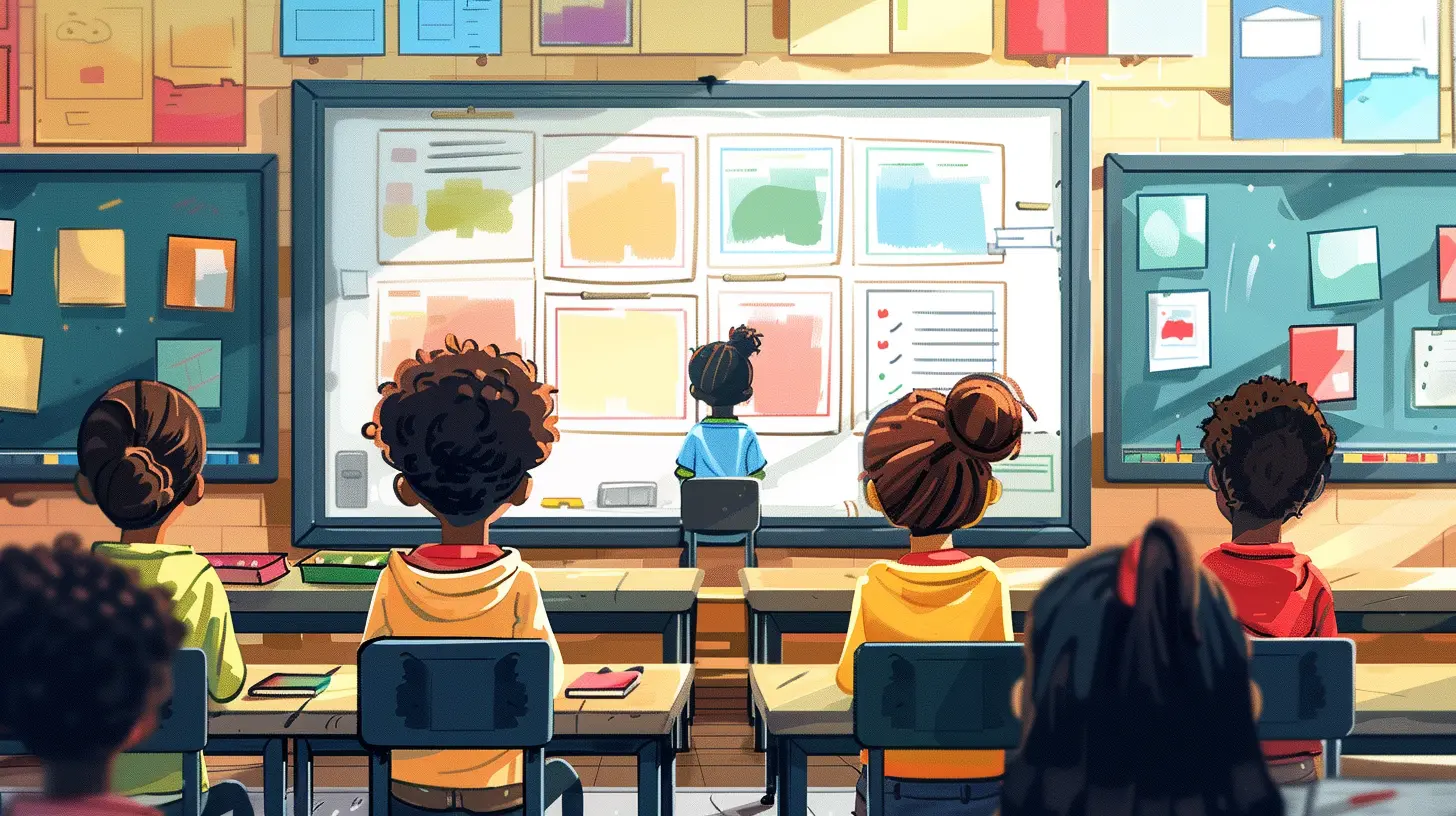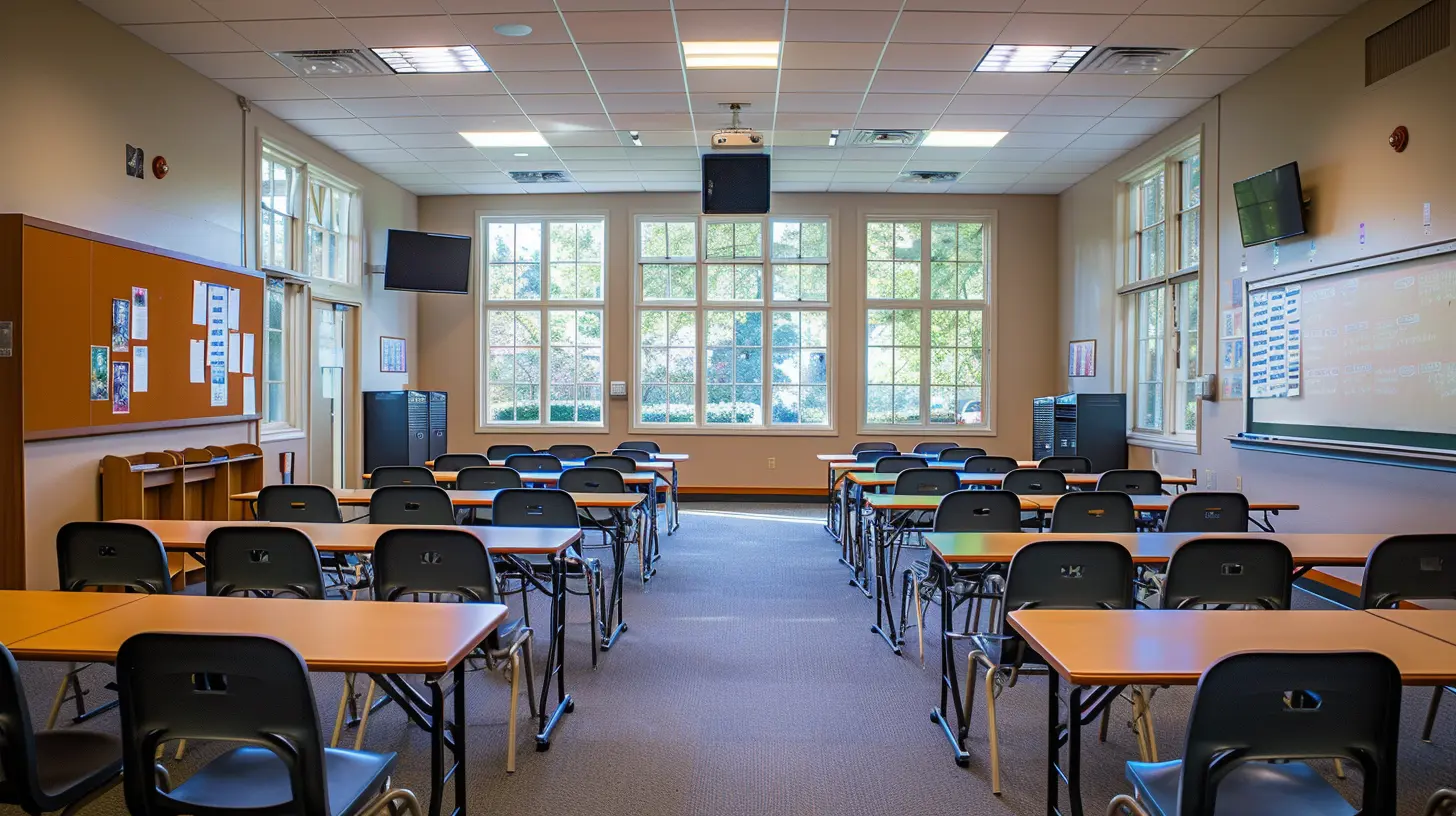Creating a Student-Centered Classroom with Clear Expectations
13 July 2025
There’s a lot of buzz around student-centered classrooms these days, and for a good reason. A student-centered classroom doesn’t just focus on what the teacher wants to teach; instead, it shifts the attention toward what students need to learn and how they learn best. But here’s the thing—if your classroom is going to be truly student-centered, you need to establish clear expectations from day one. Without them, it’s like trying to drive somewhere without a map—confusing, frustrating, and likely to end in chaos.
So, how do you create a student-centered environment while ensuring that everyone knows what’s expected of them? Let’s dive in and explore how you can build a classroom where students are empowered, engaged, and clear about their roles.

What is a Student-Centered Classroom?
Before we jump into the nuts and bolts of setting clear expectations, let’s make sure we’re all on the same page about what a student-centered classroom actually is. In a nutshell, it’s an educational setting where the focus is on the students—their interests, needs, and learning styles.Instead of using a one-size-fits-all approach, a student-centered classroom encourages flexibility. Teachers act more as facilitators rather than dictators of knowledge. Students are given the opportunity to take ownership of their learning, ask questions, and engage in critical thinking. It's the kind of environment where collaboration and creativity thrive.
But it’s not a free-for-all. Just because students have more control doesn’t mean they can do whatever they want. This is where clear expectations come into play. They set the tone, help maintain order, and ensure that students know what’s expected of them.

Why Clear Expectations Matter
Let’s face it—students (especially younger ones) crave structure, even if they won’t always admit it. Clear expectations provide that structure. They create a sense of predictability and security, which allows students to focus on their learning rather than worrying about what’s going to happen next.But it’s more than just keeping things orderly. When students know what’s expected of them, they’re more likely to stay engaged and motivated. Expectations also foster independence. When students understand the rules, they can self-regulate their behavior, making your life as a teacher a whole lot easier.
Think of clear expectations as the foundation of a house. Without a strong foundation, the house won’t stand. In the same way, without clear expectations, a student-centered classroom will crumble under the weight of confusion and misbehavior.

How to Set Clear Expectations in a Student-Centered Classroom
So how do you set clear expectations without stifling the creativity and independence that comes with a student-centered approach? Here are some strategies that can help you strike the right balance.1. Involve Students in the Rule-Making Process
This might seem counterintuitive, but involving students in creating the rules can actually encourage them to follow those rules. When students are part of the process, they take ownership of the expectations. They feel like they have a voice, and they’re more likely to adhere to guidelines they helped create.Start by having an open discussion with your students. Ask them questions like, “What kind of classroom environment helps you learn best?” or “What behaviors make it hard for you to focus?” Use their responses to collaboratively create a set of expectations that everyone agrees on.
It’s like creating a team contract—when everyone has a say, the team is more likely to stick together and work toward a common goal.
2. Be Clear and Specific
Vagueness is the enemy of clear expectations. Saying “Be respectful” is a nice sentiment, but it’s too broad. What does “respect” look like in your classroom? Does it mean raising your hand before speaking? Does it involve listening when someone else is talking? Be specific about what you expect from students in various situations.For instance, instead of saying, “Complete your assignments,” try something like, “Complete your assignments by the end of the period and make sure to check if you have any questions before submitting.” This leaves no room for ambiguity.
Also, don’t forget to clarify what happens if expectations aren’t met. Consequences should be just as clear as the expectations themselves. This doesn’t mean you need to be harsh, but students should know what to expect if they don’t follow the rules.
3. Use Visual Reminders
Let’s be real—students are not going to remember every expectation you set just because you said it once. That’s where visual reminders come in handy. Post the classroom rules or expectations somewhere visible, like on a bulletin board or whiteboard. You can even create posters with student input to make them more engaging.Visual reminders aren’t just for younger students either. Even high schoolers can benefit from a quick glance at the board to remind them of the class norms. You could also use handouts or digital platforms like Google Classroom to keep expectations accessible at all times.
4. Model the Behavior You Expect
You’ve probably heard the saying, “Actions speak louder than words.” Well, it’s especially true in the classroom. If you want students to follow the expectations you set, you need to model those behaviors yourself.Want students to be respectful? Show respect in your interactions with them. Want them to ask questions when they’re confused? Make it a point to ask clarifying questions yourself when you don’t understand something. Your behavior sets the tone for the classroom, so be the example they need.
5. Reinforce Positive Behavior
One of the best ways to ensure students meet expectations is by reinforcing positive behavior. When you see a student following the rules, acknowledge it. This could be as simple as verbal praise—“Great job raising your hand before speaking!”—or something more tangible like a reward or privilege.Positive reinforcement encourages students to repeat the behaviors that meet your expectations. It also creates a more positive classroom atmosphere where students feel appreciated for their efforts.
6. Be Consistent
Consistency is key when it comes to maintaining clear expectations. If you let things slide one day but enforce the rules strictly the next, students are going to get confused. They won’t know when the rules apply and when they don’t, which can lead to more behavioral issues.Stick to your expectations no matter what. This doesn’t mean you can’t be flexible when needed, but students should generally know what to expect on a day-to-day basis.
7. Offer Opportunities for Reflection
A student-centered classroom isn’t just about teaching students academic content; it’s also about helping them grow as individuals. One way to do this is by offering opportunities for reflection.Let’s say a student didn’t meet an expectation. Instead of immediately jumping to consequences, invite them to reflect on their behavior. Ask them questions like, “Why do you think you didn’t meet that expectation?” or “What can you do differently next time?” This encourages students to take responsibility for their actions, which is a key component of a student-centered classroom.
Reflection can also be a group activity. At the end of each week, you might ask the class to reflect on how well they met the expectations and what they can improve moving forward.

Building a Culture of Responsibility and Respect
Creating a student-centered classroom with clear expectations is about more than just making rules and enforcing them. It’s about building a culture where students feel responsible for their own learning and behavior. It’s about creating an environment where respect is mutual and where students understand how their actions impact not only themselves but also the entire class.When students are given the chance to take ownership of their learning, they’re more likely to stay engaged, motivated, and invested. But without clear expectations, that ownership can quickly turn into chaos.
By involving students in the rule-making process, being specific about your expectations, and reinforcing positive behavior, you can create a classroom culture that’s both student-centered and structured. And remember, consistency and reflection are your best friends in maintaining that culture over time.
Final Thoughts
Navigating the balance between student autonomy and classroom management can be tricky, but it’s not impossible. By setting clear, consistent expectations and involving students in the process, you can create a classroom environment where students are not only engaged but also empowered to succeed.So, if you’re looking to foster deeper learning, boost student motivation, and create a more harmonious classroom, it all starts with clear expectations. Trust me, your students will thank you for it.
all images in this post were generated using AI tools
Category:
Classroom ManagementAuthor:

Eva Barker
Discussion
rate this article
1 comments
Delta Walker
Imagine a classroom where unicorns teach math and every student gets a gold star for creativity! While we might not have magical creatures, setting clear expectations can make the learning space sparkle just as brightly. Let’s sprinkle a little clarity and watch the imagination soar!
July 21, 2025 at 3:43 AM

Eva Barker
Absolutely! Clear expectations can transform a classroom into a magical learning environment, inspiring creativity and engagement beyond our imagination. Let's embrace that clarity!


